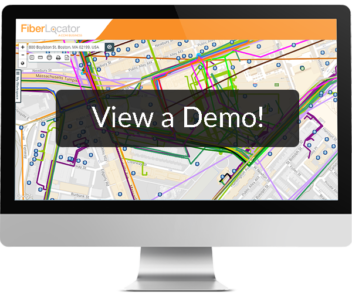As business intelligence continues to evolve, it’s easy for enterprises to be concerned with organizing the vast amount of data they have to make business decisions. However, by getting lost in the volume of the data, CIOs, IT managers and network planners risk missing out on the substance, with the data used to make business decisions posing new challenges to finding useful information amidst the high-volume inputs. But companies do have a solution for staying on track, and naturally, it involves a map.
Business intelligence can now be integrated with geographic information systems (GIS), offering new opportunities for companies and analysts to interpret data and make smarter decisions. Business data coupled with a map allows for creative analytical insights focused as much on geographic location as on success rates. Often times, geography plays a critical role in the success rate of business objectives, and that’s easy to see with this innovative approach.
Connecting GIS and BI Creates New Opportunities
With its ability to capture and display spatial data on a single map, GIS (geographic information systems) is more relevant than ever as a resource for business decision-making, allow companies to find patterns and develop strategies – especially as it relates to telecom. Enterprise market expansion and the rapid enhancement of mobile technology has made efficient and accurate access to end-users paramount to companies in virtually every industry, which means that their telecom networks need to be able to organize and transmit useful data at increasingly fast speeds.
In the words of Boundless VP Paul Ramsey, “GIS used to be about the analysis of relatively static institutional data, but new data streams mean that today’s GIS problems look very much the same as today’s big data problems: extract meaningful information from a fire hose of inputs.”
Once integrated with a company’s business intelligence, geographic information systems allow for the capturing and visualization of market tendencies and movements. Instead of being displayed on an Excel spreadsheet or in a pie chart, data is visualized geographically, allowing for companies to pinpoint precisely where their successes and failures are occurring.
More than anything, it’s the ability to visualize the information in a different manner that provides the opportunities for business intelligence success. A map with different data layers is one that’s ripe with business intelligence insights. Sales, supply chain management, demographic, risk management, and weather information can all be layered on a map, providing business intelligence professionals to see patterns and trends that might not be readily apparent on a table graph.
GIS-Integrated Business Intelligence Solutions
- Risk Management: With a map that’s filled with business success-related data points, companies can determine where their efforts are most likely to succeed.
- Site Selection: Network connectivity isn’t the only data point to consider – natural disasters and other prominent risk factors are easier to see on a map.
- Efficient Service and Apps Delivery: It’s far easier to determine if your company is in a position to deliver services when you’re actually able to see the distance on a map. Physical distance plays a major factor in latency – a map can help you visualize the effect.
- Cloud, IXP, and Data Center Access: Physical distance to and from a cloud or data center access provider can easily be pinpointed on a map. This helps companies to make key decisions regarding cloud direct connects, hybrid deployments, and other factors.
- Connectivity Optimization: Other critical data factors, such as proximity to major fiber routes, can also be studied to enhance deployment decision-making.
Boost Your Business Intelligence
So how do companies pull the meaning out of that fire hose of inputs? At FiberLocator, we’ve found that answer comes directly from our clients. No matter how complex business intelligence becomes, the process of finding any solution starts with understanding a company’s individual requirements and utilizing GIS’ capabilities in the right way to meet them.
As we say, we deliver the telecom data you need – your way, even when the data volumes get a little bigger. With the right understanding of an organization’s data, analysis needs and budget, GIS applications can become a valuable tool for making sense of your company’s big data and business intelligence initiatives in a way that helps companies achieve their holistic goals.





